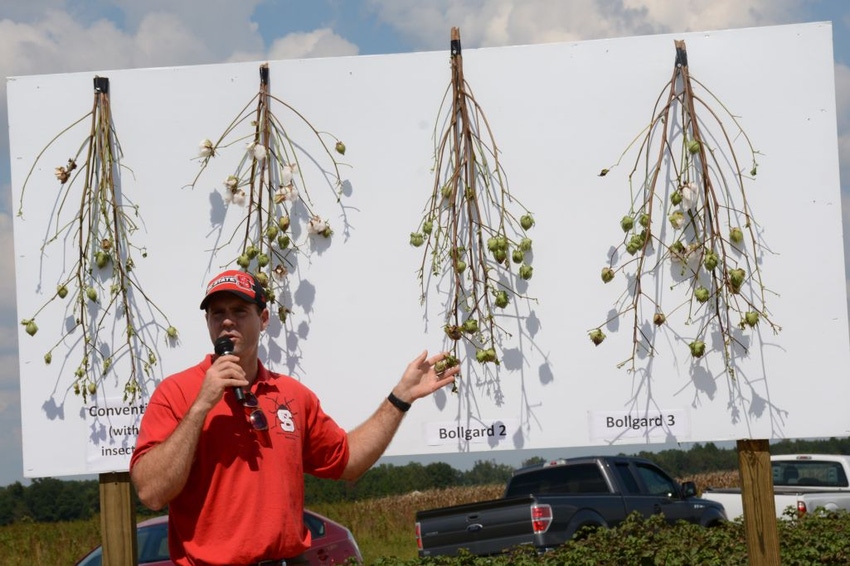
Bollworm problems in North Carolina cotton due to more corn acres
In timely planted corn, bollworms are not a problem in terms of corn yield. “But it is a problem for us in cotton. We think that those insects coming off Bt corn are going to be better adapted to survive in Bt cotton,” Dominic Reisig said.

Bollworms presented real headaches to North Carolina farmers who grew Bt cotton this year due in part to a big increase in corn acreage in the state.
“Corn is a big producer of bollworms for us in cotton,” said North Carolina State University Extension Entomologist Dominic Reisig at the Cotton Field Day held Sept. 15 in Rocky Mount.
This year, 940,000 acres of corn were planted in North Carolina, up from 730,000 acres last year while only 280,000 acres of cotton were planted in the state, down from 385,000 acres last year. Reisig said a lot of bollworms moved from corn to cotton this year.
Published replicated research shows that in timely planted corn, bollworms are not a problem in terms of corn yield. “But it is a problem for us in cotton. We think that those insects coming off Bt corn are going to be better adapted to survive in Bt cotton,” Reisig said.
“In the future as we see this resistance expand, as we know it will, it’s going to be important to know what kind of pest pressure we have in the system and if we’re going to need to spray the cotton,” Reisig added.
For bollworm management next year, Reisig urges farmers to stay up to date by going to N.C. State’s cotton portal at http://cotton.ces.ncsu.edu/. The Extension Service will provide updates on bollworm pressure and offer control guidance.
“Be prepared to spray next year and remember the No. 1 thing of insect pest management is scouting. You cannot make a treatment decision blindly. Those days are gone if they were ever here. You need to know what to spray and when to spray and the only way to do that is scouting,” Reisig said.
The plant bug problem is getting worse in North Carolina. Mohammad-Amir Aghaee, a post-doctorate scientist at N.C. State, noted that five years ago just 10 percent of North Carolina’s cotton acreage was sprayed for plant bugs while spraying for plant bugs jumped to 50 percent of cotton acreage in North Carolina last year. Aghaee noted that plant bug pressure was very high at the Vernon James Research and Extension Center in Suffolk this year.
Aghaee urged farmers in the Coastal Plain to be particularly vigilant in managing for plant bugs next year, especially in early season to protect early bolls. “What we are recommending right now, once the cotton starts squaring, get out there with neonicotinoids. Once the plant forms blooms, you can start switching to pyretheroids,” he explained.
“Piedmont growers don’t have to actually worry too much about plant bugs after bloom. For some reason the plant bug pressure isn’t as high in the Piedmont as it is in the Coastal Plain. For those in the northeastern part of the state, you really have to rotate your chemistries. The only kind of single chemistry that you can use back to back is Admire Pro, but you have to check it three days after application,” Aghaee said.
“If you’re going to go out there a week to 10 days after that spray, you’re not going to see much difference and you’re going to think it didn’t really work. Really focus on the nymphs. They’re highly mobile; they move around and they are unreliable in determining whether your sprays work. Get out there with a black beat cloth. If you’re finding at least three nymphs on the deep cloth, get out there and spray.”

This year's North Carolina Cotton Field Day drew a crowd of 254 people to the Coastal Plain Research Upper Coastal Plain Research Station in Rocky Mount.
About the Author(s)
You May Also Like





